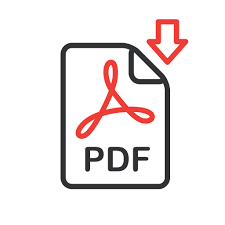St Augustine said: “The world is a book, and those who do not travel read only a page.” What does this mean? Do you agree?
Travel is the movement of people or objects between relatively distant geographical locations. A person who travels is a “traveller.”
There are many reasons for travelling. They include recreation, tourism, going on holiday, travel to research information, visiting people in various places, volunteer travel for charity, migration to begin life somewhere else, religious pilgrimages and mission trips, business, trade, and commuting. Other reasons are obtaining health care, fleeing war or simply the enjoyment of travelling. Travel may occur by human-powered transport such as walking or cycling, or by vehicles, such as trams, buses, automobiles, trains and airplanes.
Motives to travel include pleasure, relaxation, discovery and exploration, getting to know other cultures and taking personal time for building interpersonal relationships. Travel may be local, regional, national (domestic) or international. International travel typically requires a passport and visa. If your country is a member of the European Union, your ID card will be sufficient in EU countries. In some countries, non-local internal travel may require an internal passport. A trip may also be part of a round trip, which is a particular type of travel whereby a person moves from their usual residence to one or several locations.
Mode of transport (or means of transport) is a term used to distinguish substantially different ways to perform transport. The most dominant modes of transport are aviation and land transport, which includes rail, road and off -road transport, and ship transport. Other modes also exist, including pipelines, cable transport, and space transport. Sometimes human-powered transport and animal-powered transport are regarded as their own modes. Each mode of transport has a different technological solution, and some require a separate environment. Each mode has its own infrastructure, vehicles and operations, and often has unique regulations. Transportation that carries around many people and can be used by the public is known as mass transportation.
Air transport is the second fastest method of transport, after spacecraft (commercial jets can reach speeds of up to 955 kilometres per hour). Aviation is able to quickly transport people and limited amounts of cargo over longer distances, but incurs high costs and energy use; helicopters can be used for short distances or in inaccessible places. WHO estimates that up to 500,000 people are on planes at any time.
Rail transport is a means for the conveyance of passengers and goods by way of wheeled vehicles running on a rail track, known as a railway. A locomotive hauls a series of unpowered cars, which can carry passengers or freight. Intercity trains are long-haul services connecting cities; modern high-speed rail is capable of speeds up to 350 km/h (220 mph), but this requires a specially built track. Regional and commuter trains feed cities from suburbs and surrounding areas, while intra-urban transport is performed by high-capacity tramways and rapid transit, often making up the backbone of a city’s public transport.
A road is an identifiable route, through a city or village. They can be called streets and serve dual functions as an urban space easement and route. The most common road vehicle is the automobile; other users of roads include buses, trucks, motorcycles, bicycles and pedestrians. Automobiles offer high flexibility with low capacity, but are the main source of noise and air pollution in cities; buses allow for more efficient travel at the cost of reduced flexibility. Road transport by truck is often the initial and/or final stage of freight transport.
Water transport is the process of transport that a watercraft, such as a barge, boat, ship or sailboat, makes over a body of water, such as a sea, ocean, lake, canal or river. If a boat or other vessel can successfully pass through a waterway, the waterway is known as a navigable waterway.
Pipeline transport sends goods through a pipe. Most commonly, liquid and gases are sent, but pneumatic tubes can also send solid capsules using compressed air. Short-distance systems exist for sewage, slurry, water and beer, while long-distance networks are used for petroleum and natural gas.
Cable transport is a broad mode whereby vehicles are pulled by cables. They include aerial tramways, elevators, escalators and ski lifts; some of these are also categorized as conveyor transport.
Space transport is transport out of the Earth’s atmosphere into outer space by means of a spacecraft. It is rarely used except to put satellites into orbit and conduct scientific experiments. However, man has landed on the Moon, and probes have been sent to all the planets of the solar system.
Answer the questions.
- Do people in your country travel for fun or necessity? Explain.
- Which places of interest would you show to tourists in your town?
- Which places wouldn’t you show them? Why?
- In what way is travelling in the EU countries easier for European citizens?
- How do you imagine future forms of travel?
- How would tourism help the local/national economy?
- In the light of climate change information are you prepared to change the way you travel to school, rethink holiday travel plans etc.?

